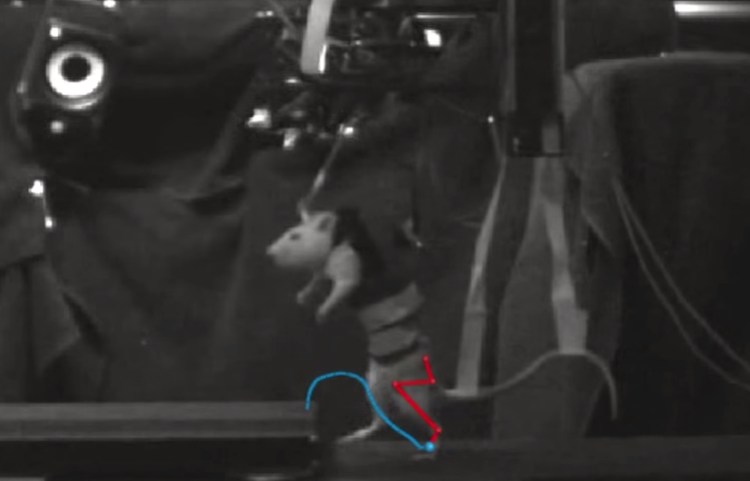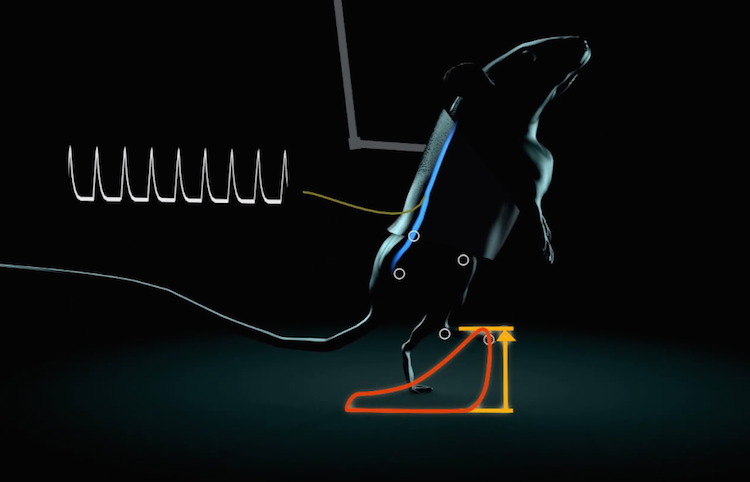Swiss scientists are ready to treat paralysis

Using electrical stimulation of the damaged areas of the spinal cord, scientists were able to accurately control in real time the movement of the limbs of a paralyzed rat. On the way - testing on a person ...
We have all heard of exoskeletons, which, through the application of forces from outside, allow paralyzed people to move their arms or legs. But in the study described below, a solution is proposed that does not require bulky and complex wearable mechanisms, but relies only on internal stimulation.
In the course of the NEUWalk project, scientists from the Federal Polytechnic School of Lausanne (a higher educational institution of the city - approx.) Forced the hind paws of a rat, completely paralyzed as a result of spinal cord injury, to make the movements necessary to move the rodent.
')
The project is based on the idea that the human body needs electricity for normal functioning. Roughly speaking, the brain moves the body, sending electrical signals down to the spinal cord and into the nervous system. When the spinal cord is damaged, the signals cannot reach the corresponding area of brain tissue, which leads to immobilization of a certain part of the body. The higher the damage, the greater the paralysis.
But the electrical signal sent through the electrodes directly to the spinal cord below the damage can replace brain signals - this is the discovery of a group of scientists from Lausanne under the leadership of the neurobiologist Grégoire Courtine.

Scientists have previously injured the spinal cord of several rats in the middle of it, which resulted in complete paralysis of the rodents' hind limbs. Then they implanted flexible electrodes into the brain tissue, connecting tissue to avoid damage, which eventually allowed scientists to transmit electrical signals to paralyzed parts of the animal's body.
Naturally, the implanted electrodes alone were not enough for the rat to start making walking movements. The way the brain sends electrical signals is not at all like an indiscriminate flow. On the contrary - the frequency of electrical stimulation, for example, affects the height of the limb.
After carefully examining all aspects of how electrical stimulation affects the movement of the limbs of a laboratory animal, a group of scientists determined ways to stimulate the spinal cord for a smooth, even gait and even to overcome obstacles.
“We have learned to fully control the rat's hind legs,” says Kurten. “The rat could not arbitrarily control its limbs, but we managed to restore the activity of the spinal cord and stimulate it to perform natural walking movements. We can control in real time how the rat moves and how high it raises its legs. ”
Clinical trials in humans can begin no earlier than June of the following year. Kurtin's group plans to start working with patients with partial spinal cord injuries at the University Hospital of Lausanne. The work will include the Gait Platform equipment set created during the research process, which consists of a specially made treadmill and support system, as well as 14 infrared cameras that read the movement of reflective markers on the patient’s body, and two ordinary cameras for recording movements.
“Simple scientific discoveries that shed light on how the nervous system works can be used to create more efficient neuroprosthetics technologies,” says co-author and neuroengineer Silvestro Micera. “We believe that this technology can one day significantly improve the lives of people who suffer from neurological disorders.”
The original article about the NEUWalk project is here .
Source: https://habr.com/ru/post/238695/
All Articles